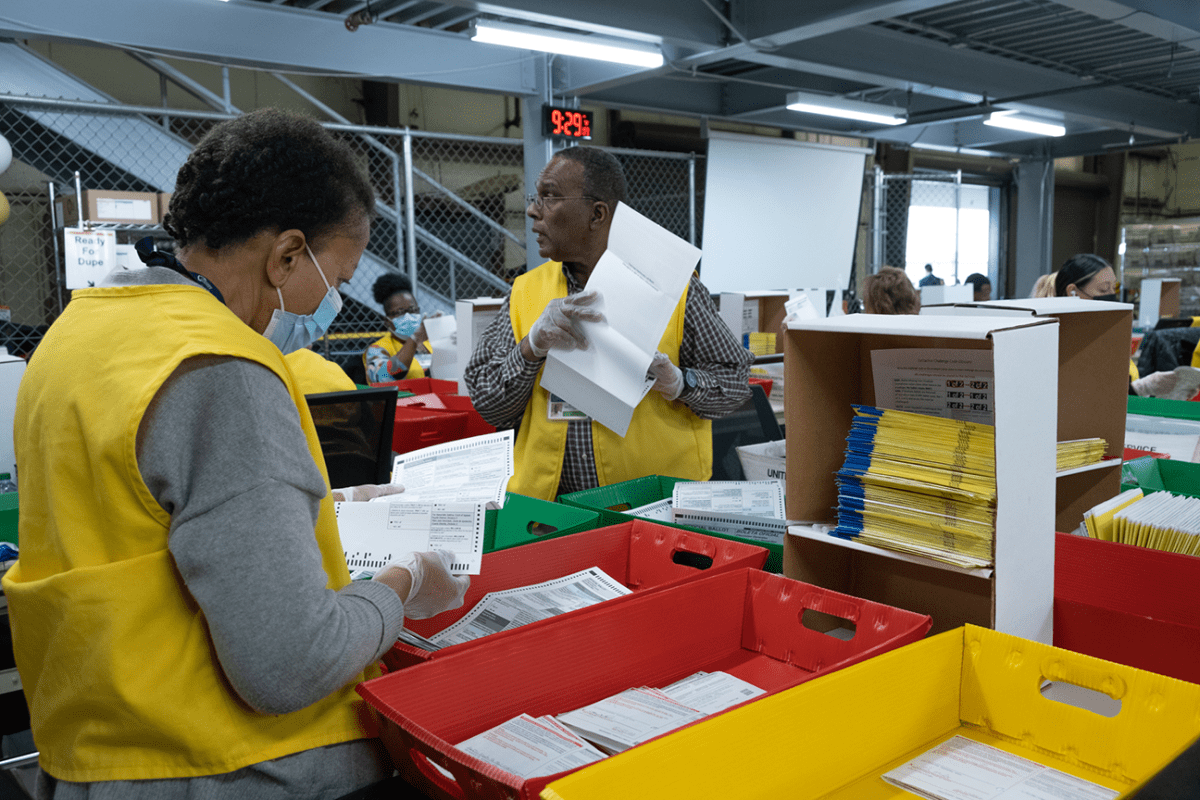Last Updated on November 6, 2022 by BVN
Story by Breanna Reeves | Photos by Aryana Noroozi
Registrar of Voters across the state have begun processing and counting mail-in and early voting ballots as they gear up for the midterm election on November 8.
While voters may spend minutes marking their ballots, the task of processing and verifying ballots takes a bit longer. The San Bernardino County Registrar of Voters invited members of the media to observe the journey of a ballot once residents cast it.
There are five essential steps that a ballot goes through after it is submitted to the Registrar of Voters: sorting, signature verification, ballot extraction, counting (and adjudication) and tabulation.
Each step has several security measures to maintain the integrity of election ballots, such as having only trained staff at each station, keycard access-only rooms, large windows for observer viewing and a two-person rule.
With approximately 1.1 million registered voters across San Bernardino County, the facility began verifying ballots on November 1 in anticipation of the millions of ballots that are set to come in over the next week.
Sorting
Once a ballot is submitted in the sealed envelope and signed, the ballots are sent through a sorting machine that electronically scans the envelopes to capture barcodes and signatures.
“It’s a sealed envelope at this point with the ballot inside, hopefully. These envelopes are just fed through the machine [and] the machine sorts it, but through the sorting process, it captures the image of that barcode and the signature,” Stephenie Shea, Interim Assistant, San Bernardino County Registrar of Voters, explained.
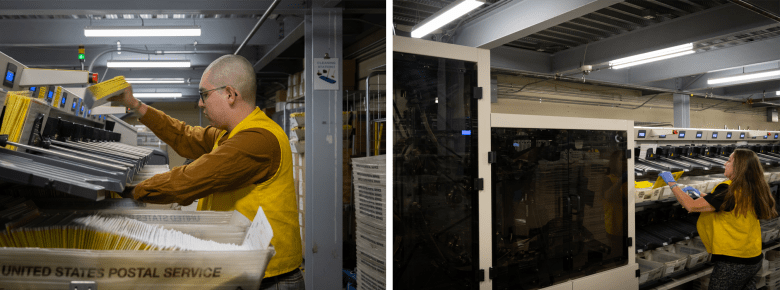
“Basically, the ballot envelopes have a unique barcode on them as well as the voter signature on them. And this is the sorting machine which basically captures that barcode and the voter signature, and that’s where it goes next to signature verification for the group to compare those signatures.”
Signature verification
Once the ballot envelopes are scanned and uploaded, they move to a signature verification process where staff at computers examine and verify the signatures on the envelopes. Staff are trained to look for two points of verification in the signatures, such as specific characteristics of the signature and compare the ballot signature to what the Registrar of Voters has on file. If staff are unable to verify signatures, voters will receive a letter from the department requesting a signature to verify their ballot.
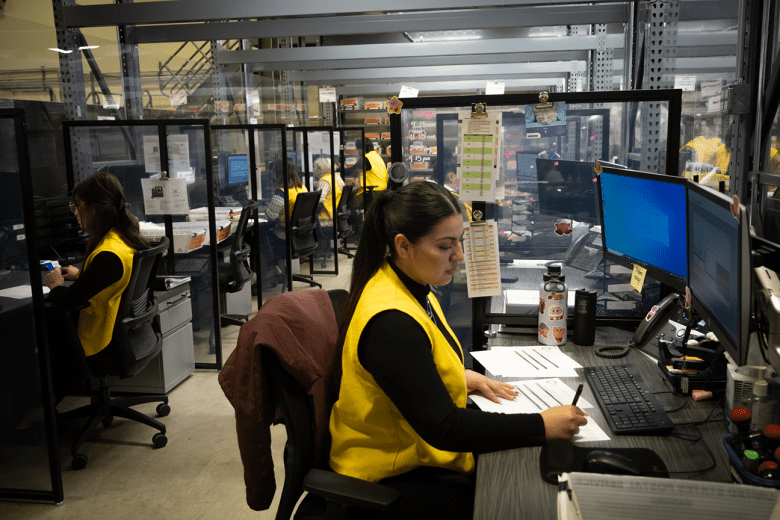
Ballot extraction
After signatures are verified, the ballots move on to ballot extraction. During the extraction process, more than a dozen workers are tasked with removing ballots from envelopes and organizing them into boxes that are categorized by “pocket numbers” which are associated with the precincts that correspond to the ballots.
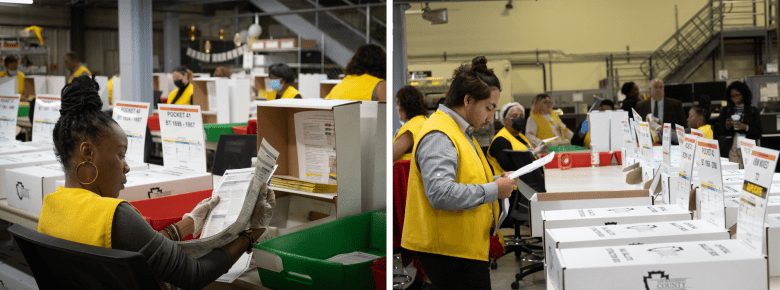
At this point, the three-card ballots are separated from the signed envelopes, making them anonymous as they are prepared to be scanned. The pocket number boxes are stacked on metal racks and are then moved to the counting room.
Counting
Pocket boxes are stacked on racks while three-person teams in blue vests scan the ballots in the counting room, using high-speed counting machines to scan the ballots. During this process, trained staff prepare the ballots by making them as flat as possible in order to be fed into the machine and scanned into the system.
“This room is by approved access only, so no one can just walk in here and do this. The staff members that are in here, the ones that are wearing vests, they’re the only ones that are on the machines counting,” Melissa Eickman, Media Specialist, San Bernardino County Registrar of Voters, said.
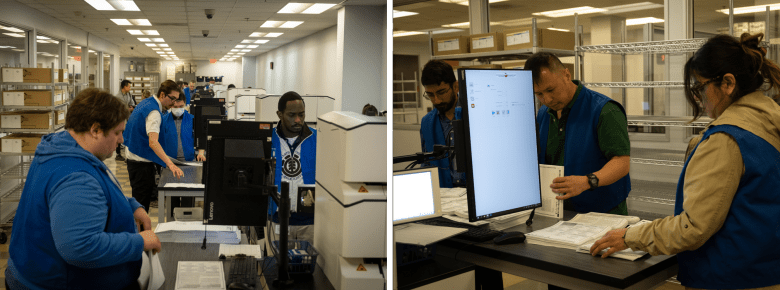
“You might see some other people without the vest that are working with them. Those would be our leads that are going to be helping if they have any issues or [they] have any questions if the machine is not sure if the ballot made the count.”
After ballots are scanned into the system, the server determines if a ballot needs to be reviewed by a supervisor, also known as being adjudicated.
The process of adjudication for ballots
Christina Anderson has been a Business Systems Analyst III (BSA III) for San Bernardino County for 15 years. She explained that there are three types of ballots that are reviewed in the adjudication room: blank ballots, over count ballots and write-in ballots.
A blank ballot is when all the voting targets (bubbles) are blank or when voters circle all the names or check them, leaving nothing in the voting targets.
An over-count ballot is when a voter mistakenly fills in two bubbles where there is only a need for one vote. In some instances, voters will correctly fill in a bubble, but change their answer and put an X through the bubble and mark another. The two person team reviews such ballots and correctly counts them as the voter intended.
An undervote ballot is when a voter chooses not to vote in a particular contest on the ballot, so they will leave it blank. Undervote ballots are not selected for review in the adjudication room because “everything would come through here,” said Anderson, due to a lot of voters opting not to vote in some contests on the ballot.
However, if an entire ballot is left blank, that would be selected for review because it could indicate that a voter chose to vote not according to the instructions.
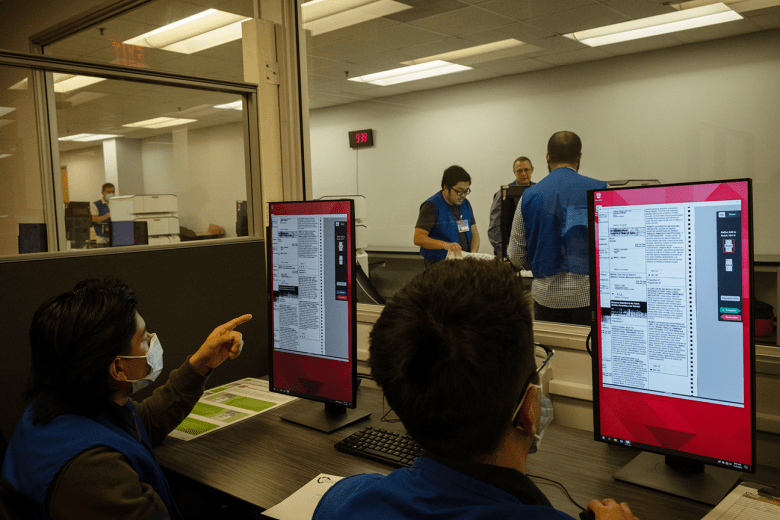
All write-in ballots have to be reviewed. According to Anderson, “If it’s not a certified write-in or a candidate on the ballot, then we will remove it and it becomes an undervote because it’s not a qualified write-in, but if it causes an overvote, [that is] if they mark the target and they’re consistent, then that becomes an overvote and nobody gets a vote.”
In this room, the two person teams are tasked with reviewing ballots and determining, based on specific rules, what the voters marked on their ballots. If voters showed consistency with voting a particular way across their ballot such as filling in the appropriate number of bubbles, but made an error and crossed out a bubble, the teams will go ahead and mark the correct bubble intended by the voter.
Staff examine the ballots and based on the California Secretary of State’s Uniform Vote Counting Standards, make determinations on what the voter’s intent was.
Tabulation
The final process in the journey of an election ballot is tabulation, which is when ballot results are counted. No states are allowed to report results before Election Day. Although ballots are processed through tabulators before Election Day, they are not tabulated until Election Day.
Data from the ballots that have been processed and scanned are stored in a secure tabulation room or “valid tally server room” as Eickman called the room. The room is card key access only and two people are required in the room together at all times.
“We have cameras in this room. So, we’re being filmed right now and there is a two person rule. The only people that come in here are the people that have business in here. We don’t typically bring observers or anyone in here,” Eickman explained during the media tour. “But we do have those windows. On Election Night, we shut down our employee break room and that’s where our observers are going to be, so they can see what’s going on here.”
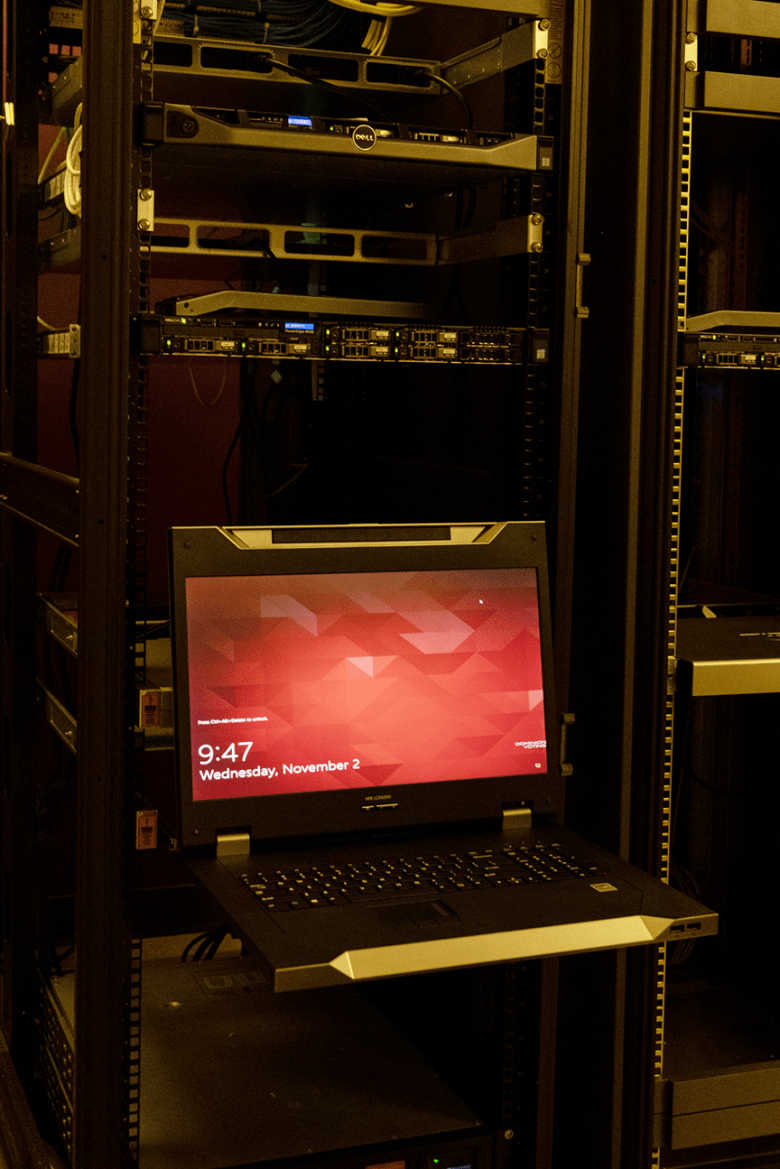
The tabulation room contains two server racks — a main server and a backup server. The computers in the room are only connected to a server, not the internet or wifi. Once the data from an election season is counted, the servers are erased, reformatted and receive a new installment of state-approved software called “The Golden Image.”
“In between elections, all of these computers, all of the adjudication workstations and all of the computers on the high pro [counting machines], as well as these servers on this side, are all loaded back to their original firmware like they’re brand new. And then the software that’s loaded is the [Secretary of State] certified software,” Anderson concluded.
When polls close at 8 p.m. on November 8, unofficial results from early ballots and mail-in ballots will be announced as early as 8:30 p.m., with results being updated every two hours as ballots continue to be tabulated on Election night.
The final stop on the journey for ballots is a gated storage section located on the second floor of the facility where ballots are stored in boxes and locked away for 22 months, as required by law, in the event that the ballots need to be reexamined. After 22 months, ballots are destroyed and the cycle begins again in the next election season.
To confirm that a ballot has been received and processed, voters can track their ballot by visiting https://california.ballottrax.net/voter/.



